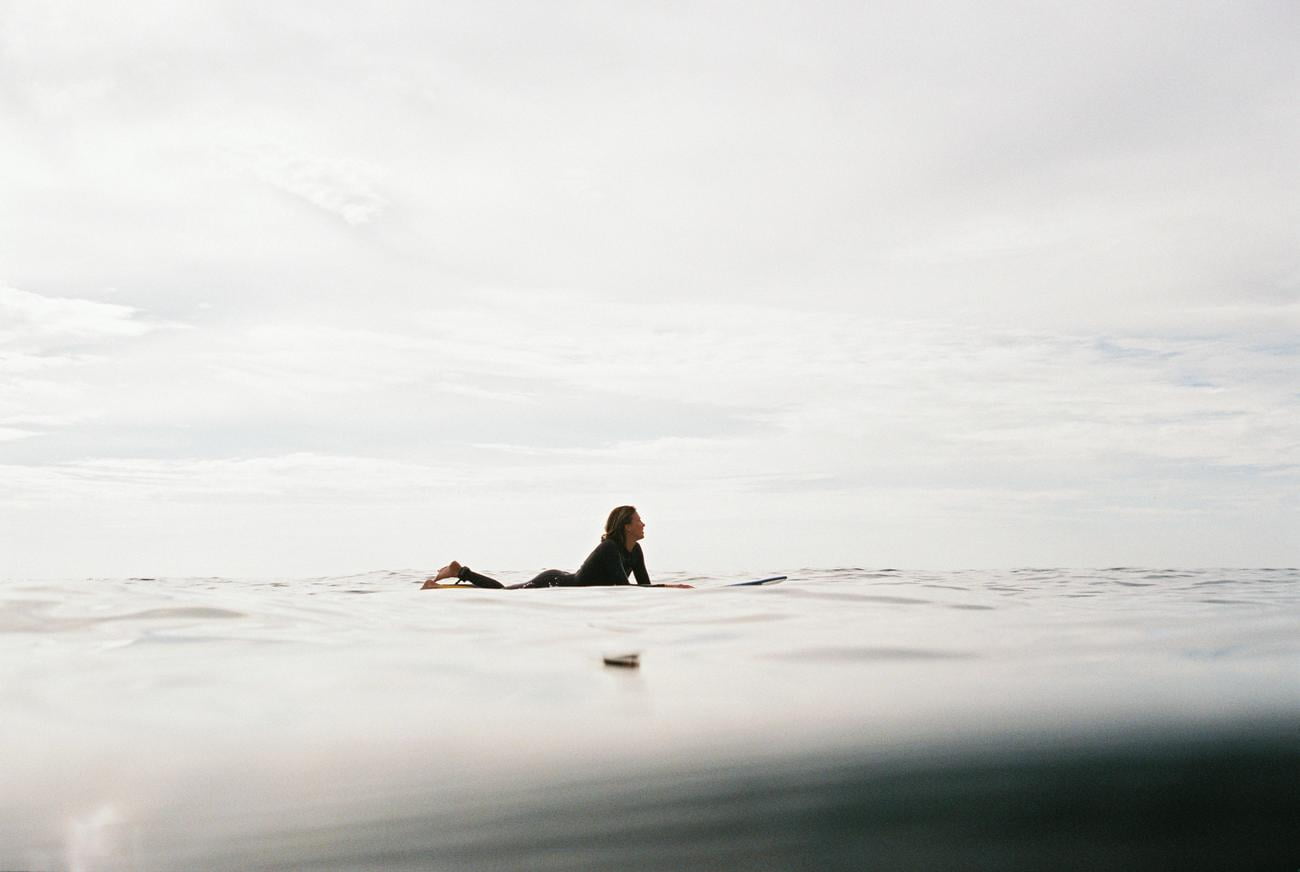Are you a curious soul who has always been intrigued by the art of surfing? Perhaps you’ve watched mesmerizing videos of surfers conquering towering waves and wondered, “What is this magical sport all about?” Well, buckle up because this article is about to take you on an exhilarating ride into the world of surfing. From the basics of wave dynamics to the essential equipment and safety measures, we will dive deep into the heart of this thrilling water sport. So grab your board, wax it up, and get ready to ride the waves as we unveil the art of surfing in all its glory!

What Is Surfing
Surfing, often referred to as the ultimate water sport, is the art of riding breaking waves to shore on a specially designed board. It’s an exhilarating experience that combines elements of athleticism, skill, and a deep connection with the natural forces of the ocean. But what exactly is surfing and what makes it so appealing to millions of people around the world? In this comprehensive guide, we will dive into the world of surfing to uncover its essence and explore its various aspects.
At its core, surfing is all about riding waves. Whether it’s in the vastness of the ocean or through the innovation of wave-generating technology, surfers paddle out to meet the incoming swells and harness their energy to glide across the water’s surface. However, beyond this simple description lies a captivating sport with a rich history, scientific principles, and an entire community that lives and breathes surfing.
Surfing is not just limited to traditional ocean waves. Thanks to the advent of wave pools and artificial wave technologies, surfers can now also ride waves in controlled environments such as pools and rivers. This development has not only expanded the accessibility of the sport but has also given rise to other offshoots like wakeboarding, skimboarding, skateboarding, and windsurfing, where the riding surfaces may vary, but the fundamental stoke remains the same.
In the world of surfing, waves come in various forms. There are dumping waves, characterized by a steep, fast-breaking crest that crashes with immense force. Surging waves surge forward with a relentless power, while standing waves remain stationary, allowing surfers to ride in place. Each type of wave presents its own unique challenges and opportunities, making the art of surfing a constant journey of adaptability and growth.
Science plays a major role in the world of surfing, particularly in the realm of hydrodynamics. Hydrodynamics is the study of water in motion, and understanding its principles helps surfers predict, analyze, and respond to the movement of waves. It’s like deciphering a secret language of the ocean, where every dip, rise, and flow can be interpreted and exploited to create an extraordinary ride.
One of the key aspects of surfers’ lives revolves around seeking out the perfect swell. Swells are stable waves that form far away from the beach due to weather systems or geological features. Surfers become adventurers, constantly chasing these elusive swells, traveling to different destinations and spending countless hours waiting for the ideal conditions. It’s this passion for the search that unites the global community of surfers, creating a vibrant culture of exploration, camaraderie, and shared experiences.
So what is it about surfing that captivates the hearts and minds of so many? Why do people willingly subject themselves to early mornings, cold water, and wipeouts? Perhaps it’s the thrill of standing on a board, harnessing the power of the ocean, and feeling an indescribable connection with the forces of nature. Surfers become one with the wave, a harmonious dance between human and water that transcends words and defies explanation.
In conclusion, surfing is an art form that goes far beyond simply riding waves. It is an immersive experience that requires dedication, skill, and an ongoing relationship with the ocean. Surfers are united by their shared love for the sport, a love that keeps them searching for that next wave, that next amazing ride. So whether you’re a seasoned wave rider or a curious beginner, the world of surfing awaits, ready to welcome you into its incredible realm of stoke and adventure.
“Surfing is not just a sport, it’s a way of life—a constant pursuit of joy, freedom, and harmony with the ocean.”
Surfing is an exhilarating sport that combines the thrill of riding the waves with the beauty and power of the ocean. As you paddle out into the water, you can’t help but feel the anticipation building, knowing that each wave has the potential to bring you an incredible ride. If you’re curious about the history, techniques, and facts about surfing, then you should definitely check out our article on facts about surfing. It’s packed full of interesting information that will leave you even more eager to grab a board and hit the waves. So why wait? Dive into the world of surfing and explore the fascinating facts that make it such an incredible sport! (URL: ../facts-about-surfing)
What Is Surfing:
Surfing, the art of riding waves, is a thrilling activity that requires both skill and style. Whether you’re a beginner or an experienced surfer, there’s always more to learn about the various techniques that can enhance your performance on the waves. From mastering the perfect pop-up to executing sharp turns, navigating the ocean on a surfboard is an exhilarating experience that can be enjoyed by all. If you’re looking to improve your surfing game, check out our comprehensive guide to surfing techniques. With step-by-step instructions and helpful tips, you’ll be shredding like a pro in no time. So grab your board and dive into the world of surfing!
Read more about surfing techniques here: surfing techniques
Surfing is not just about the skills, it’s also about the gear. Having the right equipment can make all the difference in your surfing performance. From choosing the right board to selecting the appropriate wetsuit, having the best surfing gear is essential for a successful session in the water. Whether you’re a beginner or an advanced surfer, investing in quality gear will ensure that you’re comfortable and well-equipped to handle any wave that comes your way. So, if you’re looking to upgrade your surfing arsenal, take a look at our collection of top-notch surfing gear.
Explore our wide range of surfing gear here: surfing gear
Surfing is not just a sport, it’s a way of life. The surf culture is a vibrant and diverse community that thrives on the love for the ocean and the pursuit of endless waves. From the passionate surfers who spend hours in the water to the laid-back beach bums who soak up the sun on the shore, surf culture encompasses a sense of camaraderie and adventure. If you’re looking to immerse yourself in the surf lifestyle, discover the rich history and unique traditions that define surf culture. Join us on a journey of discovery, and experience the magic of surf culture.
Dive into the world of surf culture here: surf culture
The Physics Behind the Art of Surfing
[youtube v=”5nCcE-jABSo”]
Surfing and the Mastery of Physics
Surfers may not always be aware of it, but they are essentially masters of the complex laws of physics from the moment they hit the water with their boards. When a surfer and their board enter the water, the board, due to its size and light weight, displaces water. This displacement creates a pushing force that allows the surfer to float on the water as they paddle out. In other words, the weight of the water displaced pushes against the combined weight of the surfer and the board, keeping them afloat.
A Perfect Wave: The Transfer of Energy
Every surfer patiently waits for the perfect wave. Ocean waves, like other waves in physics, are a transfer of energy. This energy transfer is initiated by wind blowing across the ocean’s surface, causing water molecules near the surface to vibrate and create ripples that eventually transform into ocean waves. Changes on the surface, influenced by gravity, attempt to return the water to its original flat state. As waves crash, neighboring water molecules pull and push against each other, creating waves. This motion transmits energy through wave motion, but it is more limited.
The Dynamics of Wave Movement
Near the shore, wave movement is restricted by shallow waters, causing waves to occur only in limited areas compared to offshore. This constraint concentrates energy near the surface of the water. Additionally, as waves approach the shore, the gentle and flat coastal terrain transforms them, creating parallel channels. This moment is crucial for a surfer. As the wave approaches, they turn their board in the same direction as the wave and paddle at the same speed. By forming an angle with the water, a dynamic pressure is created under the board, allowing the surfer and the board to float on the water’s surface and glide across it. The increased momentum during this process helps the surfer maintain stability and eventually stand up, enabling them to ride the wave.
Riding the Wave: Speed, Direction, and Whorls
Once a surfer catches a wave, they surf along its front, parallel to the shore, adjusting their speed and direction using the rudder on their board. The crest of the wave, located above the surfer, experiences maximum acceleration of the water molecules, causing them to move faster than those below. This results in the characteristic whorls or arches seen as the wave glides along the shoreline. In some cases, a wave dome can enclose the entire wave, forming a moving tube known as a roll.
Surfing and the Power of Nature
Different beaches offer different experiences due to the complexity of the underwater terrain and waves themselves. For example, underwater canyons or rocky terrains in places like Nazare, Portugal, or Mavericks, California focus wave energy, creating sought-after large waves. Some waves travel for more than a week, originating thousands of kilometers offshore from subtle ripples. The waves crashing into sunny California may have their origins in a storm near New Zealand. While surfers may not consciously consider South Pacific weather, geological tectonics, or hydrodynamics, these factors significantly influence their ability to catch the perfect wave.
“The art of catching the perfect wave depends on these things and more. It is the tip of the constant energy fluctuations that have shaped the universe since its beginning.”
Surfing is a captivating combination of athleticism, skill, and a deep connection with the ocean. It allows surfers to harness the power of the ocean, feel a connection with nature, and be part of a vibrant culture of exploration and shared experiences.
“Surfing is an art form that requires dedication, skill, and an ongoing relationship with the ocean.”
Overall, the mastery of physics plays a major role in surfing, helping surfers predict and respond to the movement of waves. By seeking out stable swells, which form far away due to weather systems or geological features, surfers are able to engage in the thrilling art of riding breaking waves on specially designed boards.
“Science and a deep understanding of hydrodynamics are integral to the world of surfing, allowing surfers to conquer and enjoy the power and beauty of ocean waves.”
FAQ
What is surfing?
Surfing is a water sport that involves riding breaking waves to shore on a surfboard. It can be done in the ocean as well as in pools and rivers with the help of technology that creates waves. Surfing has given rise to various offshoots such as wakeboarding, skimboarding, skateboarding, and windsurfing.
What are the different types of waves for surfing?
There are different types of waves for surfing, including dumping waves, surging waves, and standing waves. Each type of wave poses unique challenges and requires different skills to navigate effectively.
How is surfing based on the science of hydrodynamics?
Surfing is based on the science of hydrodynamics, which is the study of water in motion. Understanding wave dynamics, including how waves form, break, and interact with the ocean floor, is essential for successful surfing.
What are surfers seeking when they look for waves?
Surfers seek out stable waves called swells, which form far away from the beach. These swells travel across the ocean and, when they reach the coastline, transform into rideable waves. Surfers are always in search of the perfect swell that offers optimal surf conditions.
Why do surfers travel to different destinations?
Surfing is a popular sport that attracts nomadic surfers who travel to different destinations in search of the perfect wave. Each surf spot has its own unique characteristics, such as wave shape, size, and intensity, making it desirable for surfers seeking different experiences and challenges.
- Senior at What Age: Benefits & Eligibility Guide - March 29, 2025
- Unlocking Senior Benefits: How Old is a Senior? Your Complete Guide - March 29, 2025
- Master Russian Politeness:A Guide to Saying Please - March 29, 2025
















